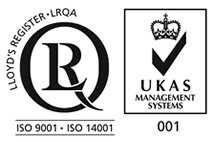
Main Products
Copyright 1998-2025 Firmetal Group All Rights Reserved. | Sitemap
The sintering and smelting of tantalum materials are the key processes that determine their final performance and application scenarios. The former focuses on powder forming, while the latter emphasizes purification and ingot preparation. The sintering of tantalum materials is mainly used for the production of tantalum powder blocks for capacitors and refractory components, while smelting is mainly used for the preparation of high-purity tantalum ingots and special alloys. There are significant differences between the two in terms of process goals, core processes and application directions.
Powder pretreatment: Mix tantalum powder (purity usually ≥99.9%, particle size adjusted according to product requirements) with a small amount of binder, and form green bodies with certain shapes and densities (such as tantalum cores for capacitors, target material green bodies) through pressing (such as cold isostatic pressing). High-temperature sintering: In a high vacuum environment (vacuum degree ≥10⁻³Pa) or inert atmosphere, the pre-fired billets are heated to 2000-2400℃ and held for several hours. During this process, tantalum powder particles form a dense structure through diffusion and fusion, and the density of the final product can reach 90% to 98% of the theoretical density. Subsequent processing: Machining (such as cutting and polishing) is carried out as required, or anodic oxidation treatment is performed on tantalum blocks for capacitors to form an oxide film dielectric layer.
Relying on a vacuum environment: At high temperatures, tantalum readily reacts with oxygen and nitrogen to form compounds. Vacuum can prevent oxidation and remove impurities in the powder (such as carbon and oxygen), thereby enhancing the purity of the product. Controlling porosity: By adjusting the sintering temperature, holding time and powder particle size, the porosity of the product can be controlled. For instance, tantalum blocks used in capacitors need to retain certain pores to increase the surface area after anodizing. Structural components, on the other hand, need to be highly dense to ensure strength. Low energy consumption: The sintering temperature is much lower than the melting point of tantalum (2996℃), and there is no need to completely melt the material. The energy consumption is lower than that of the smelting process.